This is a lovely soft Lotus Biscoff fudge with caramel undertones and subtly flavoured with Biscoff throughout. The soft fudge texture is enhanced with the gentle crunch of a Biscoff crumb topping.
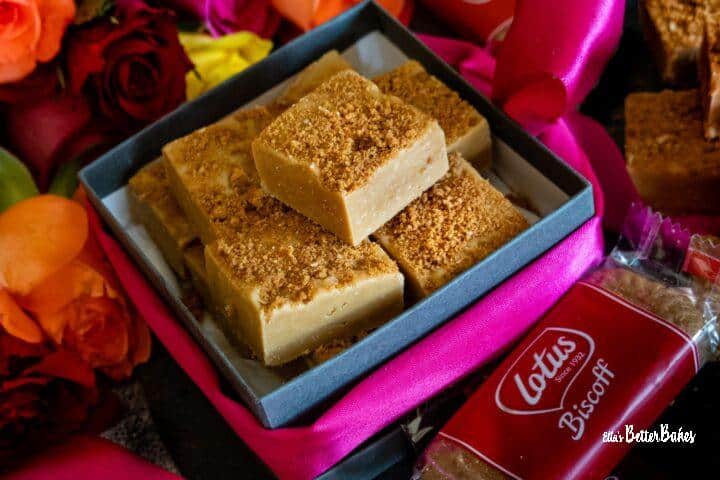
Now if you're anything like me you just adore fudge. But a soft Biscoff flavoured fudge...oh yes please! Biscoff is already a caramel based product and fudge made with demerara sugar also produces a caramel flavour, so guess what?!? The flavours work just perfectly!
So a potted history of fudge for those that don't know: as with many great culinary inventions fudge was born out of a mistake. In the late 19th century a Baltimore confectioner making up a batch of caramels accidently literally "fudged" the recipe. Fudge soon caught on big time as sugar became cheaper to buy and fudge was easy to make.

Adore caramel? You might like to try my Millionaire's Shortbread

Why make Biscoff Fudge?
Distinct and unique fudge full of lovely Biscoff flavour ✔️
This recipe makes a large batch ✔️
Biscoff fudge makes a great gift for someone special ✔️
It keeps well, lasting for 2-3 weeks if refrigerated ✔️
Quick and easy to make ✔️
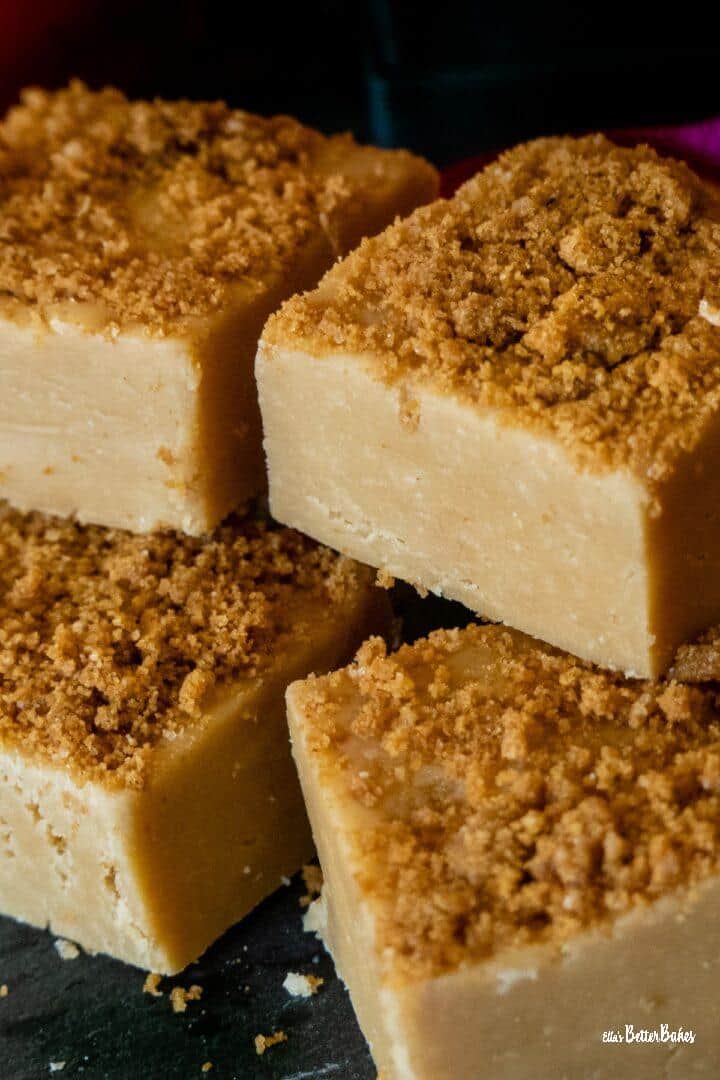
Ingredients and Substitutions
Unsalted butter: doesn't need to be softened as you will be melting it.
Condensed milk: don't be tempted to use evaporated milk it is a different product entirely. Condensed milk is a sweetened milk with water content removed and as such is an amazing ingredient. I also use condensed milk to make my no churn easy Lotus Biscoff Ice Cream with Milk Chocolate.
Milk: I use semi-skimmed milk but you can use whole or skimmed. If you use skimmed I recommend using 75ml and 75 ml of double cream.
Double cream (heavy cream): gives the Biscoff fudge extra smooth creaminess.
Demerara sugar: fudge is traditionally made with brown sugar. Brown sugar gives the fudge a caramel flavour and lovely caramel colouring. I never make fudge without it! Do not be tempted to use white sugar, it will not deliver the same flavour.
Vanilla bean paste: gives the Lotus Biscoff fudge recipe another flavour dimension, I prefer to use vanilla bean paste as it has a more intense vanilla flavour. You can use vanilla extract however if you prefer.
Biscoff spread: I use soft spread, but you can use the crunchy Biscoff spread if you prefer and if you want a more biscuit texture to your Biscoff fudge.
Lotus biscuits: crushed into a fine sand to give a crunchy topping to your Biscoff fudge.
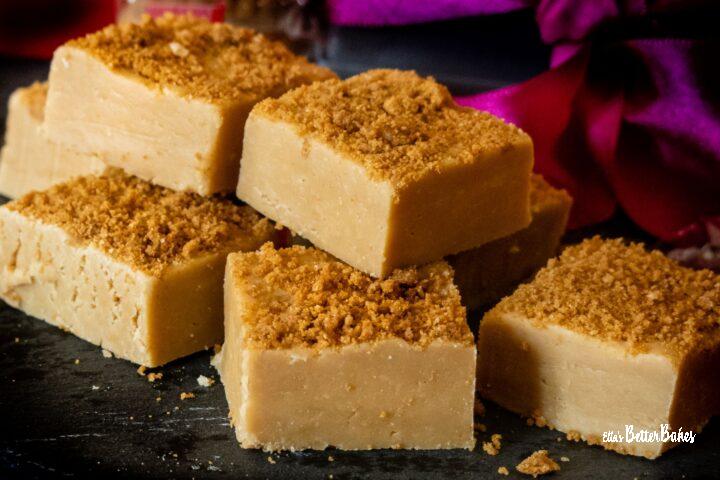
Instructions
See end of post Recipe Card for precise quantities and instructions.
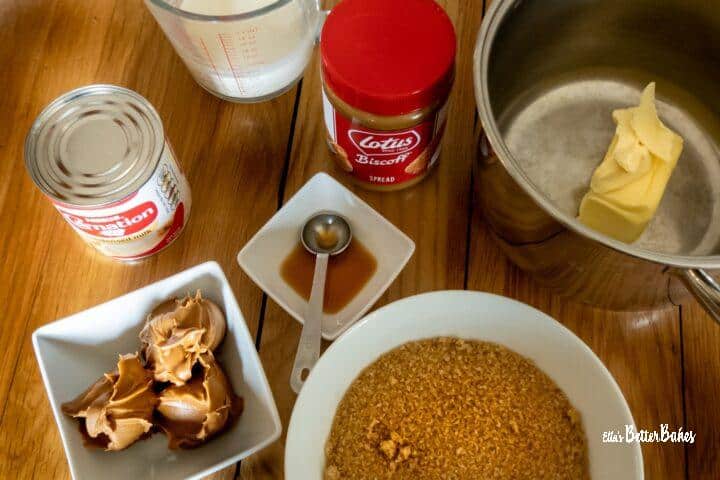


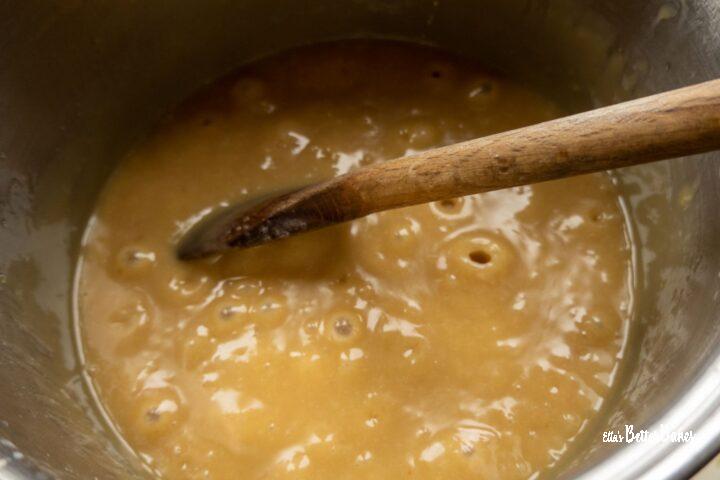
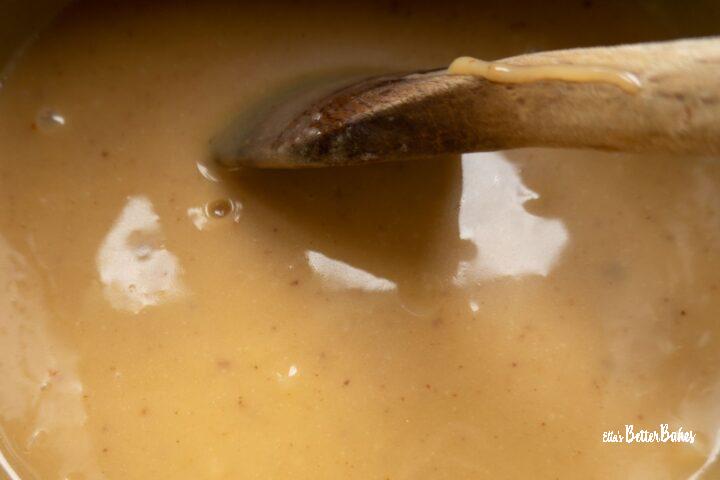
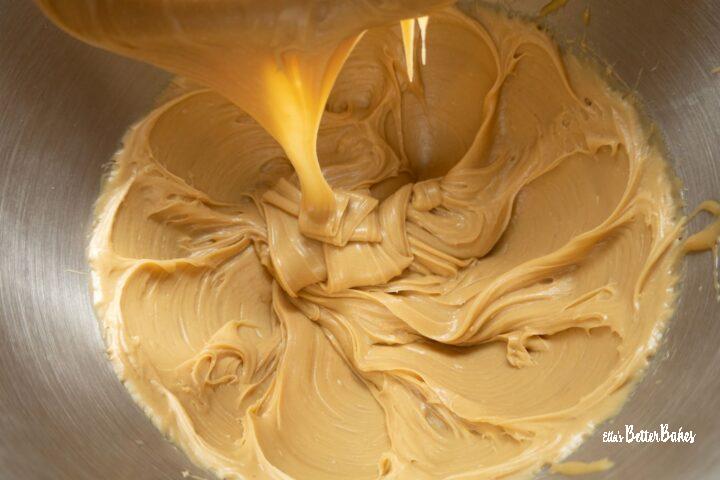
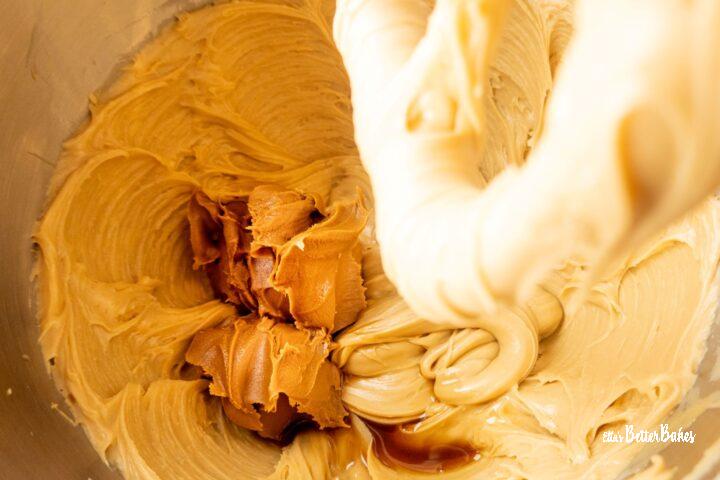
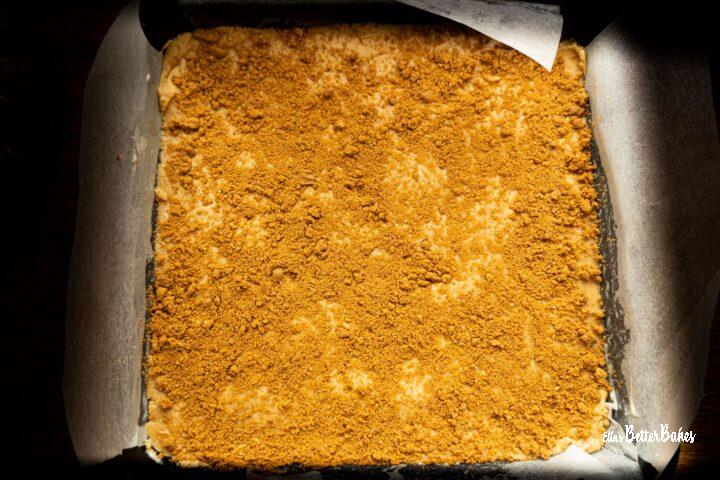
Add your butter, milk, cream, condensed milk, and demerara sugar to your heavy based saucepan.
Turn up the heat and bring to a rolling boil.
Once the fudge has reached temperature remove it from the heat.
Set the fudge aside to cool.
Beat the fudge.
Add in your Biscoff and vanilla bean extract.
Pour the Biscoff fudge into your prepared baking tin.
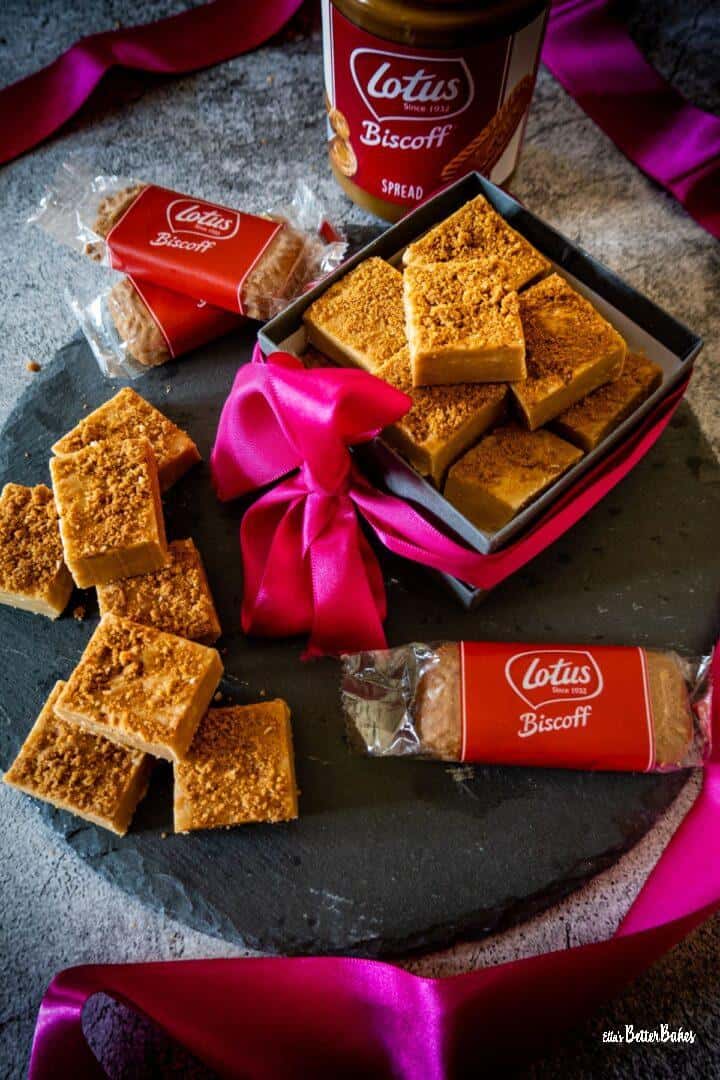
Top Tips
- Use a balloon whisk or a square based wooden spoon. The larger surface area will scrape the base of the pan better when you are simmering and stirring your lava like mixture. It will take about 12-14 minutes to come up to temperature.
- Use a heavy based saucepan. It will conduct the heat far better and help prevent the mixture burning on the base of the pan.
- If you start to see flecks of brown whilst stirring the Biscoff fudge it means it is catching on the base of the pan. Remove it from the heat at once and keep stirring fast. Then return to the heat after a minute once it has cooled slightly.
Variations
- You can use dark brown sugar in place of demerara. It will dissolve much more quickly when heated. It will give your fudge a more richer flavour due to the molasses content and it will be darker in colour. As such, however, you might not taste the Biscoff as distinctly.
- You can add whatever additional ingredients you choose e.g. chocolate chips or nuts etc. Add in a handful after you have beaten the fudge.
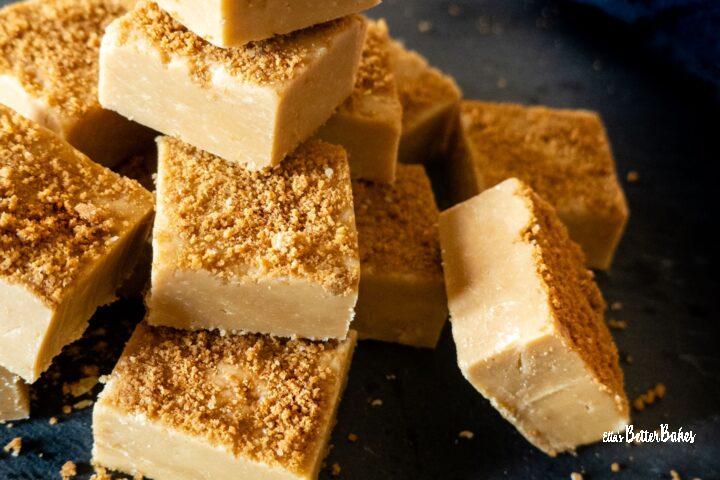
Storage
Stored in an airtight container in a cool place, Biscoff fudge will keep for 1-2 weeks at room temperature.
Kept in a fridge however it will be fine for 2-3 weeks.
FAQ
How do I know when my Biscoff fudge is ready?
Why does it the temperature matter so much?
Did you try this recipe?
Please leave a ⭐⭐⭐⭐⭐ rating in the Recipe Card below.
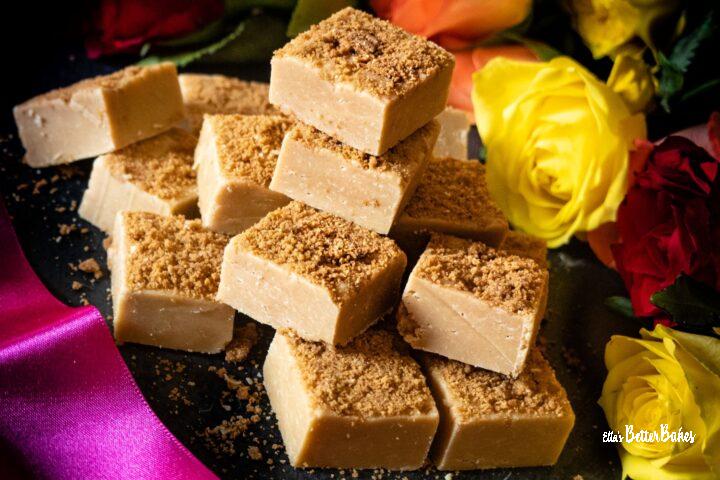
Linked Recipes
If you are a Biscoff addict (like me!) why not try these recipes too:
Biscoff Cake (Lotus Biscoff traybake)
Lotus Biscoff Ice Cream with Milk Chocolate
📖 Recipe
Biscoff Fudge
Here's what you'll need...
- Large thick based saucepan (does not need to be non-stick)
- Sugar thermometer or a small dish of iced water.
Ingredients you'll need...
- 120 g unsalted butter
- 397 g tin of condensed milk
- 100 ml milk (whole or semi-skimmed)
- 50 ml double cream (heavy cream)
- 350 g demerara sugar
- 150 g Biscoff spread
- 1 teaspoon vanilla bean paste or vanilla extract
- 4 Biscoff biscuits
Here's what we do...
- Grease your baking tin all over, then lie a piece of greaseproof paper one way so that it cover the base and sides. Grease this piece of greaseproof paper and then repeat with a piece lying in the opposite way.
- Add your butter, condensed milk, milk, double cream and demerara to your heavy based saucepan and heat slowly whilst constantly stirring with your balloon whisk or square based spoon.
- Keep heating slowly until you can no longer feel sugar grain crystals on the bottom of the pan and when you hold up a spoonful of the liquid it is also grain free.
- Once the sugar has melted, turn up the heat, stirring constantly and rapidly and bring to a rolling boil.
- Once the liquid is boiling turn it down so that is simmering and continue to stir rapidly, making sure you continually scrape the bottom of the pan to ensure the mixture does not burn.
- If you see flecks of brown rising this means it is sticking a little, take it immediately off the heat and continue to rapidly stir for a couple of minutes, then return to the heat but repeat if necessary. These brown flecks will disappear when you beat the mixture in the next stage.
- It will take 10-15 minutes for the mixture to reach the required temperature. Keep testing it with your sugar thermometer, once it reaches 115°C it is ready. If you don't have a thermometer take a little mixture onto a teaspoon and drop it into your iced water it should form a ball when but do BE CAREFUL IT IS EXTREMELY HOT!
- Once the fudge is ready keep on rapidly stirring for another 2-3 minutes otherwise it will still catch and burn on the bottom.
- Then set aside to cool until still just warm.
- Add the mixture to a bowl of your stand mixer.
- Turn the speed up to full and beat until the mixture becomes much thicker, ribbon like in texture, paler and glossy. See pictures in this post so you know what to look for.
- On a low speed beat in your Biscoff spread and vanilla bean paste (or extract) until incorporated.
- Once the Biscoff fudge has reached this consistency pour it immediately into your prepared tin.
- Take your Biscoff biscuits and crush them until they are sand like in consistency (either in a pestle and mortar or put them into a sandwich bag and bash them with a rolling pin).
- Sprinkle over the top of the fudge, press in with the back of a spoon to set them.
- Leave the Biscoff fudge to set for about 3 hours, then slice it up.

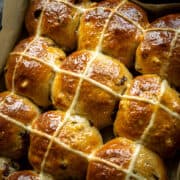
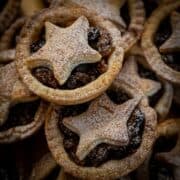
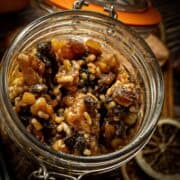

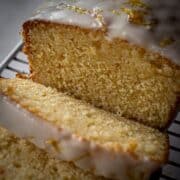
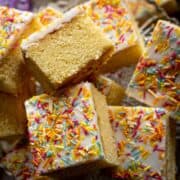
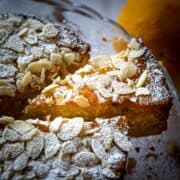

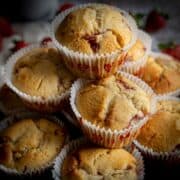


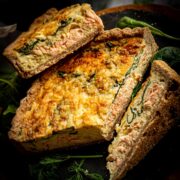
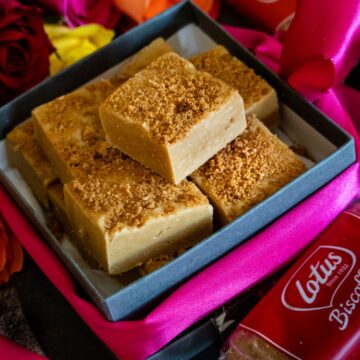
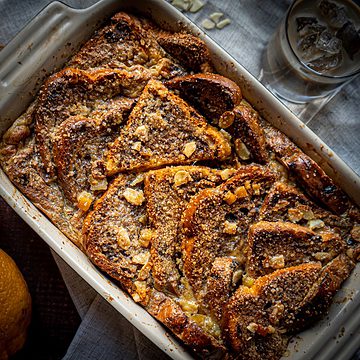
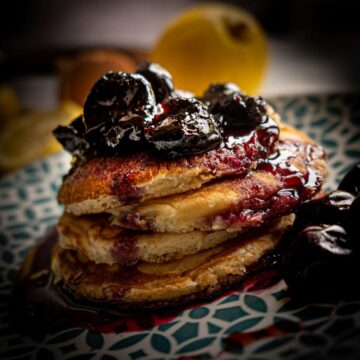
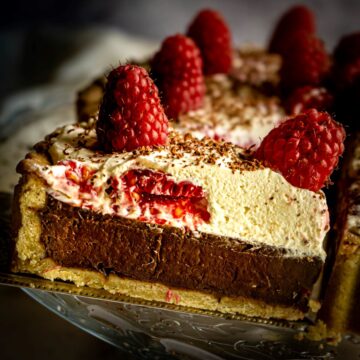
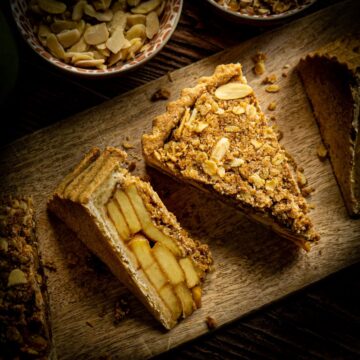
Alison says
Made this yesterday and was very pleased with the results, thank you. I had been searching for a traditional recipe for the biscoff fudge and yours was the only one I found.
Ella says
Hi Alison
I am so pleased to hear you enjoyed the recipe. I adore Biscoff Fudge too it's gorgeous isn't it.
Ella